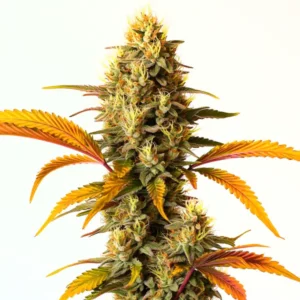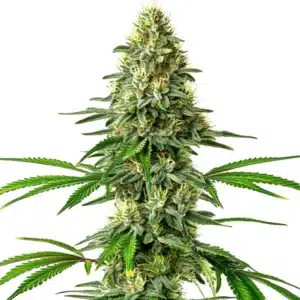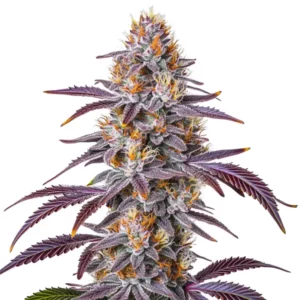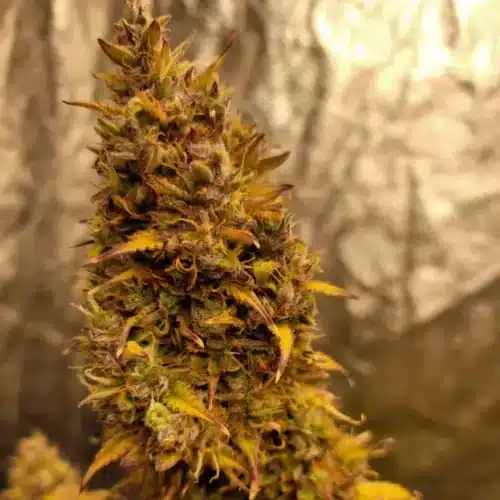From Blimburn Seeds, we bring you the best tips and tricks. Also, we are committed to all growers in the world to maximize their outdoor growing production. In other words, we will make you an expert grower and lover of our seeds.
Why choose CHEMDOG #4?
First, because it comes from the cross of two best sellers of cannabis. Secondly, one of the most sought after varieties. In other words, a plant that can reach a meter and a half in height. In addition, it is easy to cultivate by any padawans who is beginning in the arts of the culture of marijuana.
Chemdog #4 is a strain of indica tendency. The lineage of the powerful Chemdawg crosses with an amazing Green Crack.
Finally, this magnificent strain leaves no marijuana grower indifferent. In addition, from its first days of flowering, it gives sweet earthy, and fruity aromas. This great ally is ideal for having extra relaxing time.
However, we didn’t forget the most important thing. It has an indoor flowering period of 8 to 9 weeks, but we recommend 9 weeks for optimal maturation. Also, outdoors you can harvest your crop in the middle to late March.
Promos & Deals
Is Growing Chemdog #4 Outdoors in South Africa Feasible?
Yes, it’s definitely possible. Growing Chemdog #4 outdoors in South Africa can be highly successful with careful planning and attention to the local climate. South Africa’s diverse weather patterns can pose challenges, but they also offer opportunities. The country provides plenty of sunlight, warm temperatures, and varied microclimates, all of which Chemdog #4 can adapt to.
The key to success is understanding your local conditions and timing your grow correctly. South Africa’s long summer days provide the necessary light for a strong vegetative phase, while the milder winter allows for a smooth transition to flowering. With the right soil preparation, nutrient management, and protection against pests, you can achieve an abundant harvest of high-quality buds from Chemdog #4.
Geographic Considerations for South African Growers
South Africa’s geography includes coastal regions, mountain ranges, and arid areas, each offering unique growing conditions. If you’re cultivating in the coastal areas like Cape Town, expect a Mediterranean climate with warm, dry summers and cool, wet winters. This environment is perfect for starting your grow in the spring and nurturing your plants through to harvest in early autumn.
Inland areas, such as Gauteng and Limpopo, experience more extreme temperatures. Summers can get quite hot, while winters can bring sudden temperature drops. When growing Chemdog #4 outdoors in these regions, it’s important to choose a location with plenty of sunlight and natural wind protection. Consider using shade cloth to protect your plants from intense midday heat, and frost covers if your area is prone to cold snaps during early spring or late autumn.
Outdoor Growing: North vs. South South Africa

Northern Regions: Warm and Dry
Northern South Africa, including areas like Limpopo and Mpumalanga, offers a warm and dry climate that can support robust outdoor growth. Chemdog #4 thrives in this type of environment, provided you take steps to protect the plants from extreme heat. Plant your seeds in a location that receives plenty of morning sunlight but is shaded during the hottest part of the day. This setup prevents heat stress and dehydration.
Elevate your plants using raised garden beds or large containers. This technique improves drainage and prevents waterlogged roots, which can be an issue in heavy clay soils common in these areas. Adding mulch around the base of the plants helps retain moisture during hot, dry periods. Keep a close eye on the soil moisture and be ready to water deeply, especially during heat waves. When managed correctly, growing Chemdog #4 outdoors in the northern regions can yield powerful, resin-covered buds.
Southern Regions: Mediterranean Climate
The southern regions, like Cape Town, benefit from a Mediterranean climate. Here, warm, dry summers provide the perfect conditions for outdoor cultivation. The longer growing season allows Chemdog #4 to reach its full size, resulting in larger plants and more abundant yields. Begin your grow in early spring (September) to take advantage of the sunny weather.
In the southern regions, focus on proper soil drainage and nutrient management to support the plant’s vigorous growth. Be mindful of the rainy season, as excess moisture can lead to mold and mildew, especially during the flowering stage. Prune the lower branches to increase airflow around the plants, reducing the risk of fungal issues.
Soil Preparation for Growing Chemdog #4 Outdoors in South Africa
Proper soil preparation is key to the success of Chemdog #4. This strain thrives in nutrient-rich, well-draining soil that supports its rapid growth and dense bud production. In South Africa, the soil composition varies depending on the region. Coastal areas often have sandy soils, while inland regions might have clay-heavy or loamy soil.
If you’re in an area with sandy soil, amend it with organic matter like compost, coco coir, or aged manure to enhance water retention and nutrient availability. Sandy soil drains quickly, so adding these components helps keep the roots moist and fed, which is essential when growing Chemdog #4 outdoors. In contrast, if you’re dealing with clay-heavy soil, mix in perlite or coarse sand to improve drainage and prevent waterlogging.
Chemdog #4 prefers a slightly acidic pH range between 6.0 and 7.0. Before planting, test the soil’s pH and adjust if necessary. Adding lime can help raise the pH, while sulfur can lower it to the ideal range. Incorporating organic fertilizers, such as bone meal and fish emulsion, into the soil before planting provides a steady supply of essential nutrients. Proper soil preparation sets a strong foundation for the plants, allowing them to thrive in South Africa’s diverse climates.
Photoperiod: Timing Your Grow in South Africa
Chemdog #4 is a photoperiod-sensitive strain, meaning its flowering cycle is triggered by changes in daylight hours. In South Africa, the natural outdoor growing season aligns well with the needs of this strain. Spring (September) marks the beginning of the growing season, providing ample daylight hours for the plants to develop a strong vegetative structure. As summer progresses and days begin to shorten, Chemdog #4 will naturally transition into the flowering stage.
Start your seeds indoors in early spring to give them a head start. By mid-spring, when the danger of frost has passed, the seedlings will be robust enough to transplant outdoors. Choose a sunny location that receives at least six to eight hours of direct sunlight daily. In areas prone to light pollution, such as urban gardens, ensure the plants are in a secluded, dark location to avoid interruptions to their photoperiod cycle. Proper timing is critical for growing Chemdog #4 outdoors, ensuring the plants reach their full potential before the colder weather sets in.

Nutrients for Growing Chemdog #4 Outdoors in South Africa
Chemdog #4 is known for its high nutrient demands, particularly during its vigorous vegetative phase. During this stage, prioritize a nutrient mix rich in nitrogen to promote lush foliage and strong stems. Organic options like compost tea, fish emulsion, and blood meal are excellent sources of nitrogen. This strain grows rapidly, so consistent feeding is key to maintaining its health and vigor.
As the plants transition to the flowering stage, reduce nitrogen and increase phosphorus and potassium levels. These nutrients support the development of dense, resinous buds that Chemdog #4 is known for. Organic amendments like bat guano, bone meal, and kelp meal can supply the nutrients needed during this important phase. Regularly check the plants for signs of nutrient deficiencies, such as yellowing leaves or purple stems, and adjust the feeding schedule accordingly.
In South Africa’s varying climates, especially in regions with heavy rainfall, nutrients can leach from the soil quickly. To counter this, consider using slow-release organic fertilizers or applying regular compost teas. Mulching around the base of the plants helps retain soil moisture and nutrients, creating a more stable environment for growing Chemdog #4 outdoors.
Week-by-Week Care for Chemdog #4 Outdoors
Weeks 1-2: Germination and Seedling Stage
Begin by germinating your Chemdog #4 seeds indoors using a light, well-draining soil mix. Keep the seeds in a warm location with indirect sunlight to encourage sprouting. Once the seeds have sprouted, transfer them to small pots filled with nutrient-rich soil. Keep the soil moist but not soaked, as overwatering can lead to root rot. Providing the right conditions during these early weeks sets the foundation for a healthy grow when growing Chemdog #4 outdoors.
Weeks 3-4: Transitioning Outdoors
As the seedlings develop their first set of true leaves, start acclimating them to the outdoor environment. Gradually expose them to direct sunlight for a few hours each day, increasing the duration daily. By the end of week 4, your plants should be ready to transplant into their permanent outdoor location. Select a sunny spot that provides good airflow to support the plants as they grow larger. Begin feeding with a nitrogen-rich fertilizer to encourage strong vegetative growth.
Weeks 5-8: Vigorous Vegetative Growth
During these weeks, Chemdog #4 will focus on rapid growth, developing a robust structure. Continue feeding with a nutrient mix high in nitrogen to support leaf and stem development. Regularly monitor the soil’s pH to ensure it remains in the ideal range for nutrient absorption. In South Africa’s warmer regions, watering deeply but infrequently promotes root expansion and resilience against heat stress.
Implement low-stress training (LST) techniques to encourage a bushier canopy. Gently bend the branches and secure them with soft ties to maximize light exposure to all parts of the plant. In more humid regions, prune the lower branches to improve airflow around the base, reducing the risk of mold. Proper care during this stage sets the plant up for a successful flowering phase later in the grow cycle.
Weeks 9-10: Transitioning to Flowering
As daylight hours shorten, your plants will naturally begin the transition into the flowering stage. Switch to a balanced nutrient mix, reducing nitrogen levels while increasing phosphorus and potassium. These nutrients aid in bud development and resin production. Keep a close eye on weather patterns and be prepared to cover your plants if rain is forecasted, as excess moisture during this phase can promote mold growth.
Weeks 11-12: Early Flowering Stage
As your Chemdog #4 plants begin to flower, you’ll notice the formation of buds at the nodes. At this stage, the plants begin focusing their energy on producing dense, resinous flowers, making it a key period in their development. Continue feeding with a bloom-specific nutrient mix high in phosphorus and potassium to support healthy bud growth. Keep watering consistent but avoid waterlogging, as the roots need ample oxygen during this period.
Regularly inspect your plants for pests and mold, especially in South Africa’s coastal or humid regions. Remove any yellowing or lower leaves to improve airflow around the buds, reducing the risk of mold development. Pay attention to light exposure, ensuring your plants receive at least 12 hours of uninterrupted darkness each night to encourage proper flowering. These steps are vital for success when growing Chemdog #4 outdoors.
Weeks 13-14: Mid-Flowering
During these weeks, your plants will develop thicker, more resinous buds, and their aroma will intensify. Stick to your bloom nutrient regimen, but begin to slightly reduce the feeding concentration to prevent nutrient buildup in the soil. Over-fertilizing at this stage can lead to nutrient burn, characterized by browning leaf tips, which can affect bud quality.
Monitor the buds for any signs of mold or pests. If you notice issues, act quickly with natural remedies like neem oil or insecticidal soap. In South Africa’s regions with high humidity, ensure the plants have plenty of space for airflow, and use pruning techniques to keep them healthy. Managing these details will help maximize the yield and quality of your harvest when growing Chemdog #4 outdoors.
Weeks 15-16: Late Flowering and Flushing
Your Chemdog #4 plants are now approaching their peak flowering stage. The buds should be dense, sticky, and coated with a thick layer of trichomes. Begin the flushing process two weeks before your expected harvest date. Flushing involves watering the plants with plain water to remove any residual nutrients from the soil, enhancing the final flavor and smoothness of the buds.
Closely inspect the trichomes using a magnifying glass. When the trichomes transition from clear to milky white, with some turning amber, it’s time to prepare for harvest. Avoid adding any nutrients during the flushing period and focus on maintaining optimal moisture levels. Proper flushing is a critical step to ensure that growing Chemdog #4 outdoors results in a high-quality product with a smooth smoke and robust flavor.
Week 17: Harvesting Your Chemdog #4 Plants
It’s finally time to harvest! Choose a dry, sunny day to cut your plants. Use sterilized scissors to snip the branches, handling them carefully to avoid damaging the precious buds. Hang the branches upside down in a dark, well-ventilated space to dry. Proper drying typically takes 7-14 days, depending on the humidity and temperature of your environment.
After drying, trim the buds and place them in airtight containers to begin the curing process. Open the jars daily during the first week to release excess moisture, known as “burping.” This step is essential for preserving the strain’s flavor and potency, completing your journey of growing Chemdog #4 outdoors.

Health and Maintenance Throughout the Grow
Maintaining plant health is key to achieving a successful harvest. Although Chemdog #4 has some natural resistance to pests and mold, outdoor growing presents unique challenges. Regular inspections are necessary to catch any problems early. Look for common pests like spider mites, aphids, and caterpillars on both the tops and undersides of the leaves. Natural solutions like neem oil or insecticidal soap can effectively control infestations.
Weather in South Africa can be unpredictable, so stay prepared. In coastal regions prone to heavy rains, use a simple canopy or greenhouse cover to protect your plants during the flowering stage. This reduces the risk of mold and mildew, which can damage your buds. In drier regions, focus on watering consistency and mulching around the plant base to retain soil moisture.
Soil health is another key aspect. Regularly test the soil’s pH and nutrient content to ensure optimal growing conditions. If you notice nutrient deficiencies, adjust your feeding schedule to provide the necessary balance. Healthy soil not only supports vigorous plant growth but also helps the plants develop resilience to pests and environmental stresses. With careful attention to these details, growing Chemdog #4 outdoors in South Africa can yield an abundant and high-quality harvest.
Storing Your Harvest for Long-Term Quality
After curing, proper storage is key to preserving the potency and flavor of your Chemdog #4 buds. Use airtight glass jars to store the dried buds in a cool, dark place. Avoid plastic bags, as they can trap moisture and degrade the quality over time. For long-term storage, consider vacuum-sealing the buds to preserve their freshness and aroma. Proper storage ensures that your hard work in growing Chemdog #4 outdoors pays off with top-shelf cannabis that retains its effects and taste.
















